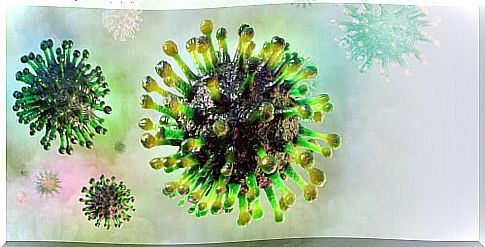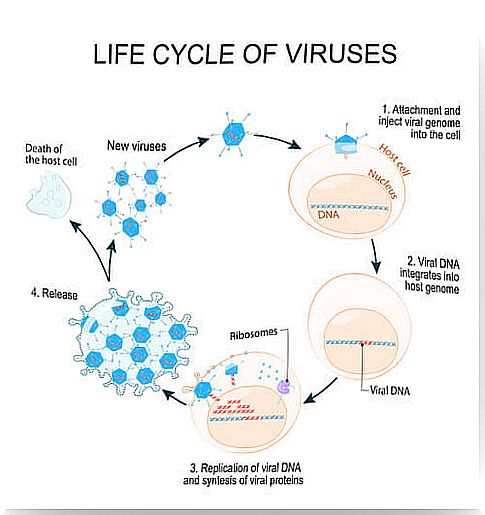Viruses: Dead Or Alive?

Classifying viruses as living organisms or has not been a topic to be debated for years, since not even scientists can agree. In this current era of global pandemic due to the COVID-19 coronavirus, the operation and viral origins are topics that are the order of the day. This makes us ask ourselves several questions : What is a virus? How does it work? Are Viruses Live?
Here we try to clarify the possible answers to these questions, since it seems that the answer depends on what we consider “life” or “being alive”.

What is a virus?
The word virus comes from “poison” in Latin. At the end of the 19th century, researchers realized that certain infectious diseases, such as rabies, were caused by particles smaller than bacteria, but that they could still be transmitted. By then there was no clear definition of what they were.
Today, we know that a virus is made up of:
- A genetic material that can be DNA or RNA,
- a protein shell called a capsid that surrounds genetic material,
- this set may, in turn, be protected by an additional layer, a lipid envelope originating from the membranes of the cells it infects. They are the so-called enveloped viruses.
So far, a virus seems more like a chemical complex than an organism.
When viruses infect a cell, called a host cell, they shed those protective covers and genetic material is injected into the cell. At that time, it uses the host’s replication machinery to produce thousands of copies of its DNA or RNA and thus be able to generate copies of itself.
Therefore viruses depend on other cells for protein synthesis, nucleic acid synthesis and the entire set of biochemical activities that allow them to multiply and transmit.

Alive or not, that’s the question
After all that we have discussed above, could we consider viruses as lifeless parasites?
A bacterium is a single cell that by itself can generate energy and reproduce, in addition to carrying out all the necessary activities for its survival, that is why we say that it is alive.
As Luis Villarreal, doctor in biology and director of the Virus Research Center at the University of California, explains:
Many microorganisms such as bacteria and archaea that are considered living beings, in stressful situations or in which there is a lack of nutrients, are capable of entering a state of latency. In this way, they are inactivated and reduce their metabolic activity and when conditions are optimal, they resume.
In this case, when asked, are the dormant cells alive? people answer yes, but biochemically these bacteria are in an “inert” state and therefore, they would not really be alive.
The same occurs with the spores of some gram-positive bacteria, which are biochemically inert but may or may not reproduce again.
As you can see, the problem comes when it comes to distinguishing between what is considered alive or not.
When we talk about viruses, we normally classify them as non-living or acellular beings, because they are not capable of reproducing by themselves and outside the host cell they are in a latent state.
We could really say that viruses are between what is alive and what is not : they do not have the capacity to replicate on their own, but they can do so in living cells and thus affect the behavior of the hosts.

And what do you think?
The answer to the question “are viruses alive?” it depends on the concept that we have of the definition of what “being alive” is, but really, whatever the answer, it seems that it does not lead us to any constructive development in the matter.
Anyway, and finally, we would like to leave open the question, what do you consider to be alive? For the reader to ask himself and inquire what his opinion is about these microorganisms and if he considers them as alive or not.








